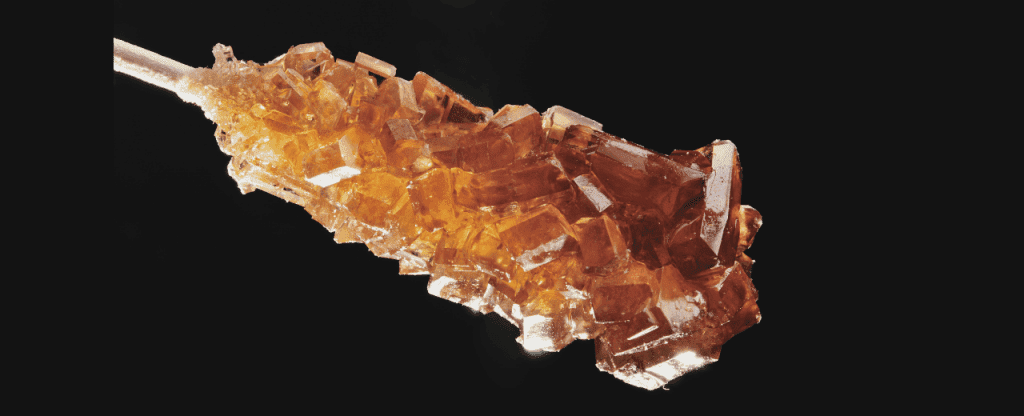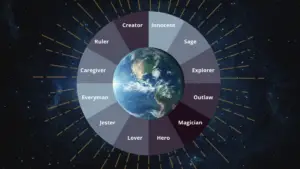When I started working with Archetypes a decade ago, I found myself wondering if Archetypes were real or just in my head. After reading the works of Carl Jung, experiencing my archetypes, and working with hundreds of men, I can distinctly say, Archetypes are real.
But… maybe not in the way you think.
Are Archetypes Real?
Although archetypes cannot be seen, we know they exist because of the patterns that appear when they are present. Archetypes are real because they affect everyone and have a significant impact on our lives.
The word archetype is derived from the ancient Greek words “archein” and “tupos,” which together mean can be interpreted as “original type” or “first-molded.“
Archetypes are often considered a general representation or symbol of something that recurs throughout history in various forms and contexts. This article will explore the idea that archetypes are real and not just imaginary concepts by presenting arguments both for and against their existence.
Example of Archetypes
There are many different types of Archetypes. Here are a few examples:
- Great Mother
- Great Father
- Warrior,
- Magician (wizard)
- Trickster
- Hero
- King (sovereign)
- Queen, etc.,
When you look at an archetype, it’s essential to not think of them as external characters but as internal traits.
The Archetypal Warrior is the part of you that has drive, unwavering beliefs, and the will to succeed. It’s not about how strong you are or how good of a fighter you are. It is instead about how you connect to your drive and passion to protect what you love.

Warrior Archetype from the Masculine Archetype Deck
How do we know Archetypes exist?
One of the main reasons someone might say “archetypes aren’t real” is because they don’t have a physical shape.
You can’t point to an object and say they are an archetype. Archetypes are a little more abstract than that.
I like to think of Archetypes as a crystalline structure that our psyche forms around.
A great metaphor is making rock candy. You heat sugar and water together and place a wooden stick in the solution. As the mixture cools, a crystalline structure will form around the stick.
The sugar will form a crystal structure every time.

Archetypes are the structure that is formed; the sugar is your personality.
We all have this instilled pattern of organization, archetypes, that helps us develop.
When making the rock candy, you can’t point to the mathematical equation that forms the crystals, but it doesn’t mean the equation isn’t real. Archetypes are the same way. Just because we can’t point to them doesn’t mean they don’t impact our lives.
Where do Archetypes come from?
Archetypes are examples of human universal – concepts that exist among every group of people.
With the help of anthropologists, psychologist C.G. Jung analyzed myths/religions, examining various cultures to see if any repeated pattern, or universals, existed. He also analyzed and mapped the dreams of many people to find these same universal symbols.
By examining the common threads among many cultures and the subconscious, he proposed the concept of archetypes. You can learn more by checking out this article on Jungian Theory on this blog.
Jung also proposed that Archetypes developed alongside human culture. They are a function of evolution. Just as every culture has a language using their mouths, every culture developed Archetypes.
Humans developed Archetypes as we were developing consciousness. It added us in developing complex personalities and the ability to distinguish ourselves as an individual.
Can we prove Archetypes exist?
Archetypes can’t be proven. We can’t point to archetypes or empirically verify them to exist. This is because they are intangible constructs within our personality.
However, they are believed to be the driving force behind deep-seated mythological systems. They are fundamental elements of humanistic mythology and have a place in our socio-historical stories.
Many people believe that we all incorporate them without even realizing it, but those who are sensitive may see their effects more clearly than others do.
Jung’s archetypes are rooted in the philosophical tradition of rationalism, meaning that his conclusions were made by logic and analysis. He didn’t look to prove they existed, just that they were observable and valuable.
In a letter to E.A. Bennet, Jung shared his thoughts on how to prove the existence of archetypes:
A scientific hypothesis is never proved absolutely in so far as an improvement is always possible.
The only proof is its applicability.
You yourself attest that the idea of the archetype explains more than any other theory, which proves its applicability.
I wonder therefore which better proof you are envisaging…
Somebody has to prove now that my idea is not applicable and to show which other viewpoint is more applicable. I wonder now, how you would proceed in providing evidence for the existence of archetypes other than their applicability?
What is better proof of a hypothesis than its applicability?
Carl Gustav Jung
I love this quote because it points out how important it is to see real change and usefulness when working with archetypes.
Do Archetypes have a tangible impact?
When someone asks if Archetypes are real, they are probably interested to know if they have real use or impact. Even though Archetypes are not tangible, they do have an actual effect.
The question of whether universal archetypes exist is a different issue than the debate over the therapeutic value in using discussions with neurotics to explore archetypes.
So perhaps the more profound question is if Archetypes are helpful.
Depth Psychologists have observed hundreds of thousands of patients finding improvement when working with Archetypes. It has been the foundation for many to understand their psyche and overcome their shadow.
Archetypes can give you the language to understand deeper aspects of who you are.
Doesn’t that make them useful?
Doesn’t their effect make them real?
Archetypes are incredibly useful to interpret dreams. There have been many studies on using archetypes within dreams to diagnose and treat social phobias. The theories of Archetypes have also found their way into computer science and data analysis.
Archetypes are a valuable tool to understand yourself, as well as our culture at large.
LEARN MORE: Exploring the Masculine Archetypes
In Conclusion
Archetypes are real, and we can witness their impact just as we know of the existence of time but can not point to a physical unit of time.
Archetypes are universal symbols that transcend the individual. They can interact with our imagination, but they are not dreams in and of themselves. They are the language of dreams.
Each of us goes through a specific process when developing our personality. That process is archetypal. As we develop, we utilize the tools of these universal symbols to create our identity.
What is even more important is to understand how archetypes are helpful.
There is real therapeutic use for Archetypes as a way to understand the psyche. You can use them to explore the different aspects of who you are—giving you a deeper language to understand yourself.
If you would like to learn more about the Masculine Archetypes within you, check out the Masculine Archetype Course. With 7 weeks of activities, videos, and writing prompts.
Awakening your connection with the Masculine Archetypes and move past the hidden patterns that hold you back.
Embody your Masculinity with the online course.





